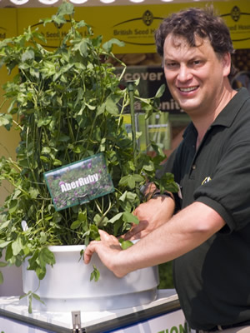
Red clover is set to become a mainstay of UK livestock production as new varieties allow more reliable and sustainable delivery of a range of key benefits.
So said Paul Billings of British Seed Houses, who insisted during a recent presentation to farmers on behalf of LEGNET at Broadfield Farm, Highgrove, Gloucestershire that a revitalised red clover breeding programme at IGER, Aberystwyth, would be a major boost for farmers aiming to make quality homegrown forage the mainstay of their businesses in the future.
"Red clover should become an integral part of dairy and livestock production systems simply for its value as a source of affordable homegrown protein," he says, "but the benefits go far wider than this.
"The crop has the capacity to reduce fertiliser costs significantly, contributing up to 180 kgN/ha when grown as part of a well-balanced grass and red clover sward. Grown with high sugar grasses as a key component of silage cutting leys within an overall grass and clover farming system, red clover can play its part in eliminating artificial nitrogen inputs completely.
"The new generation of red clover varieties, so far exemplified by AberRuby, will offer significantly increased yields, greater persistence and improved grazing tolerance, so the potential is well beyond anything we have seen before."
According to Mr Billings, it will be essential for there to be progress in utilisation to match the strides being made in breeding if the full potential of red clover is to be exploited.
This, he says, is already being seen in the combination of red clover with high sugar grasses for silage.
"Red clover, like all legumes, is notoriously difficult to ensile due to a relatively low sugar content and high buffering capacity," he explains. "Hence, red clover is typically combined with another crop – most usually ryegrass – for silage making. New research has now shown that ryegrasses bred specifically for high sugar content – and specifically the AberHSG varieties bred at IGER – increase the overall nutritional value, with more of the protein and sugar being retained in the mature silage.
"The most effective combination for a 1 – 3 year cutting ley would be red clover and a high sugar AberHybrid ryegrass, such as AberEcho. This would provide three cuts of quality silage per season, with minimal nitrogen inputs, and could be grazed by fattening lambs in the autumn, providing care is taken to avoid poaching."
